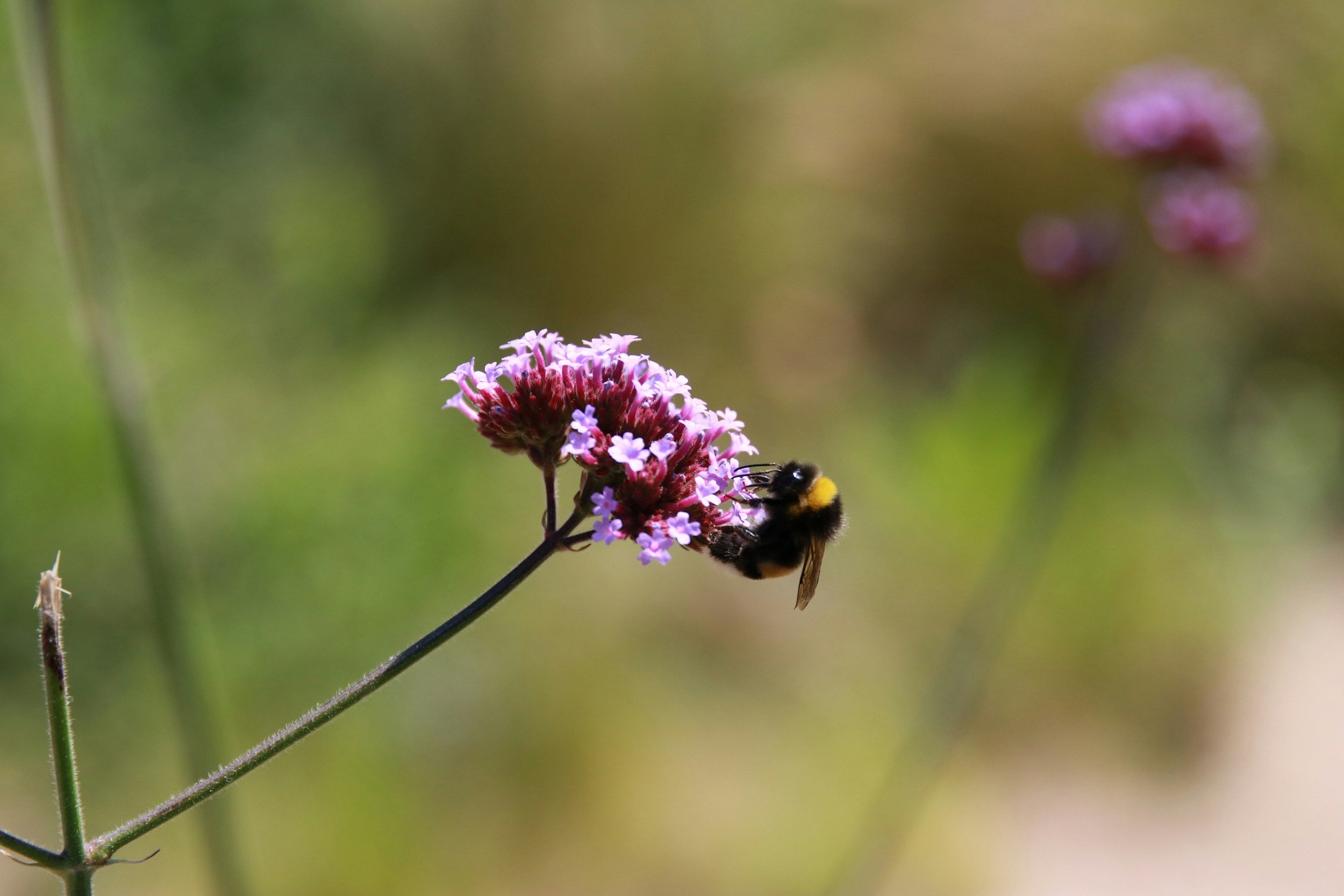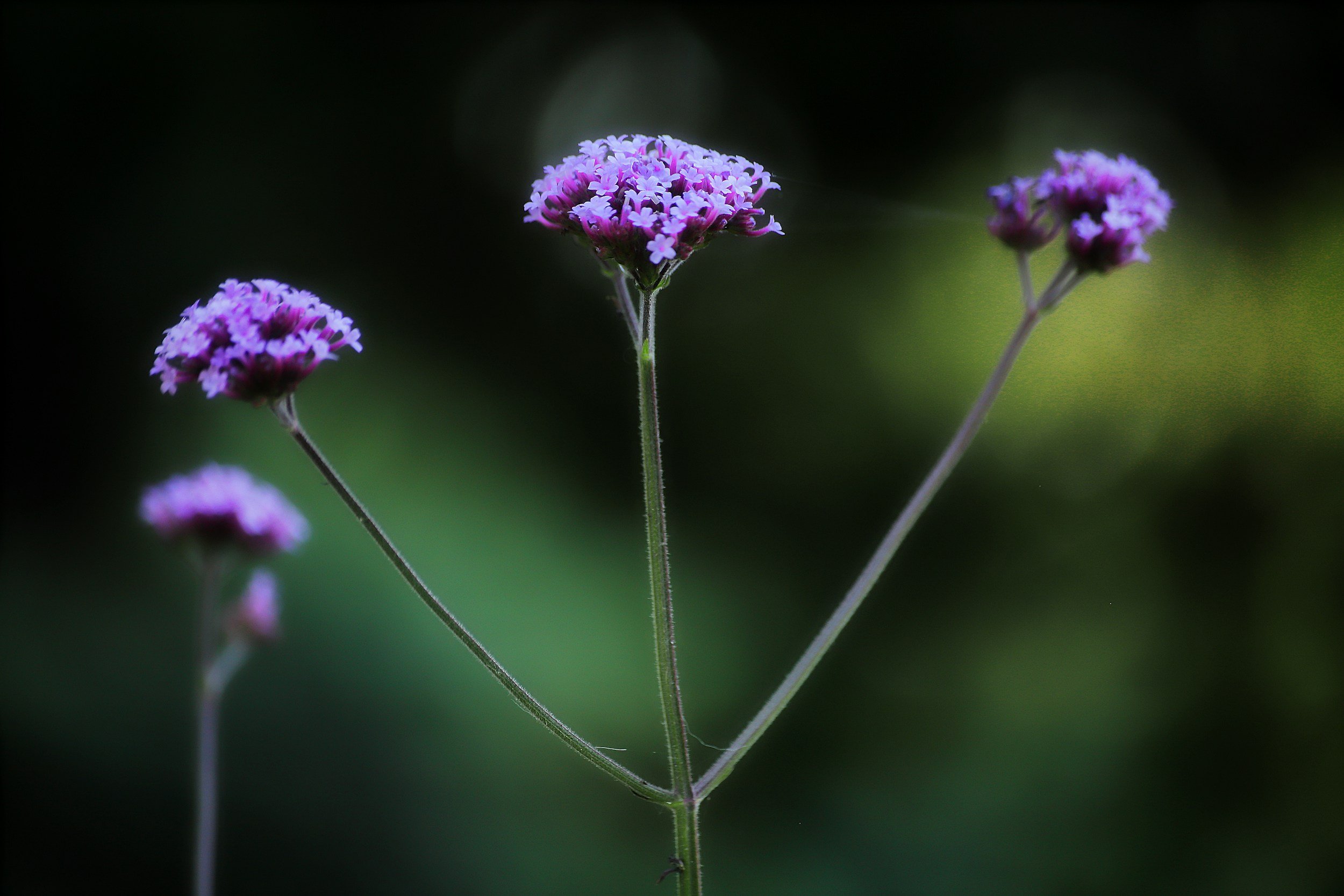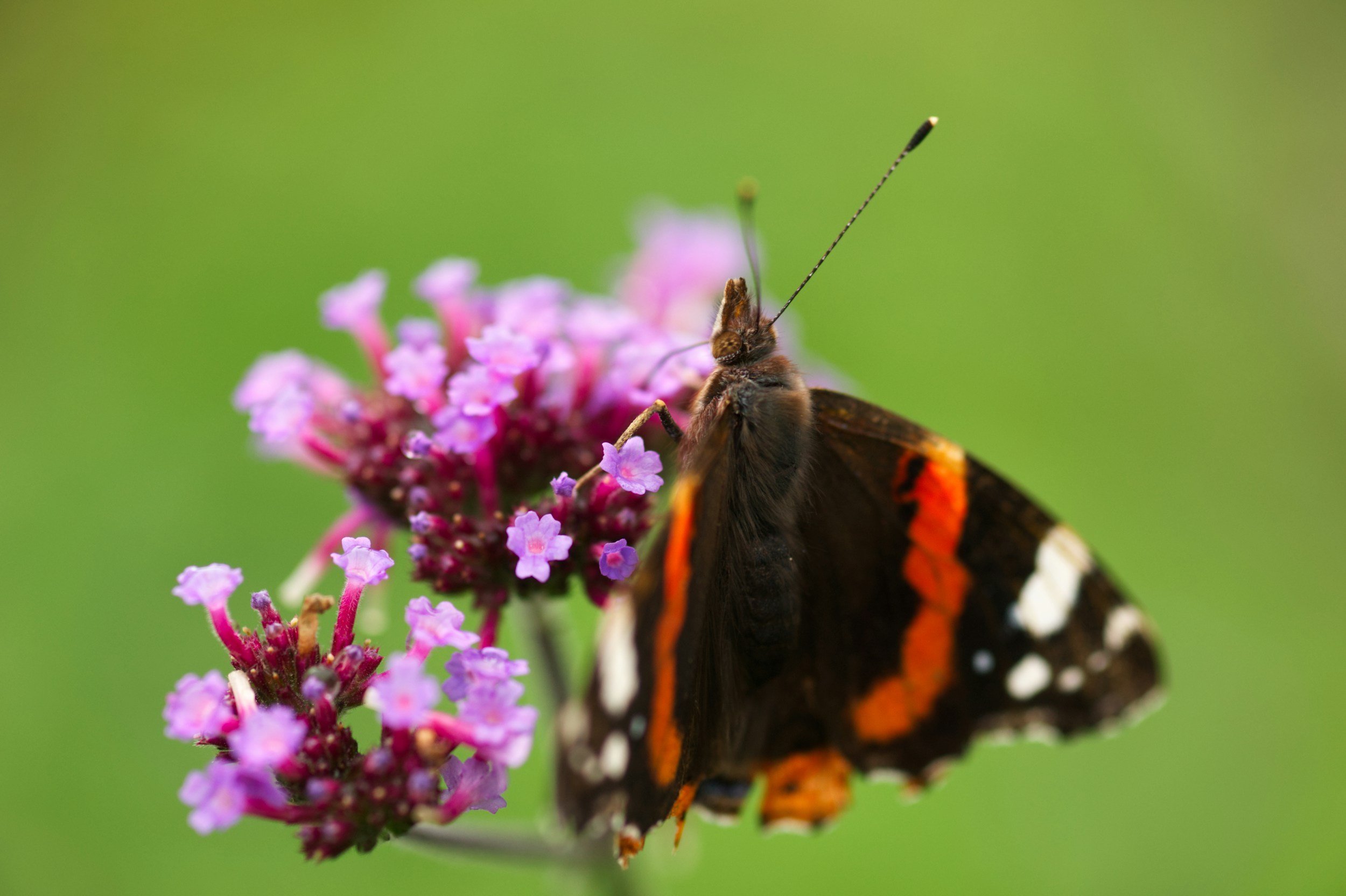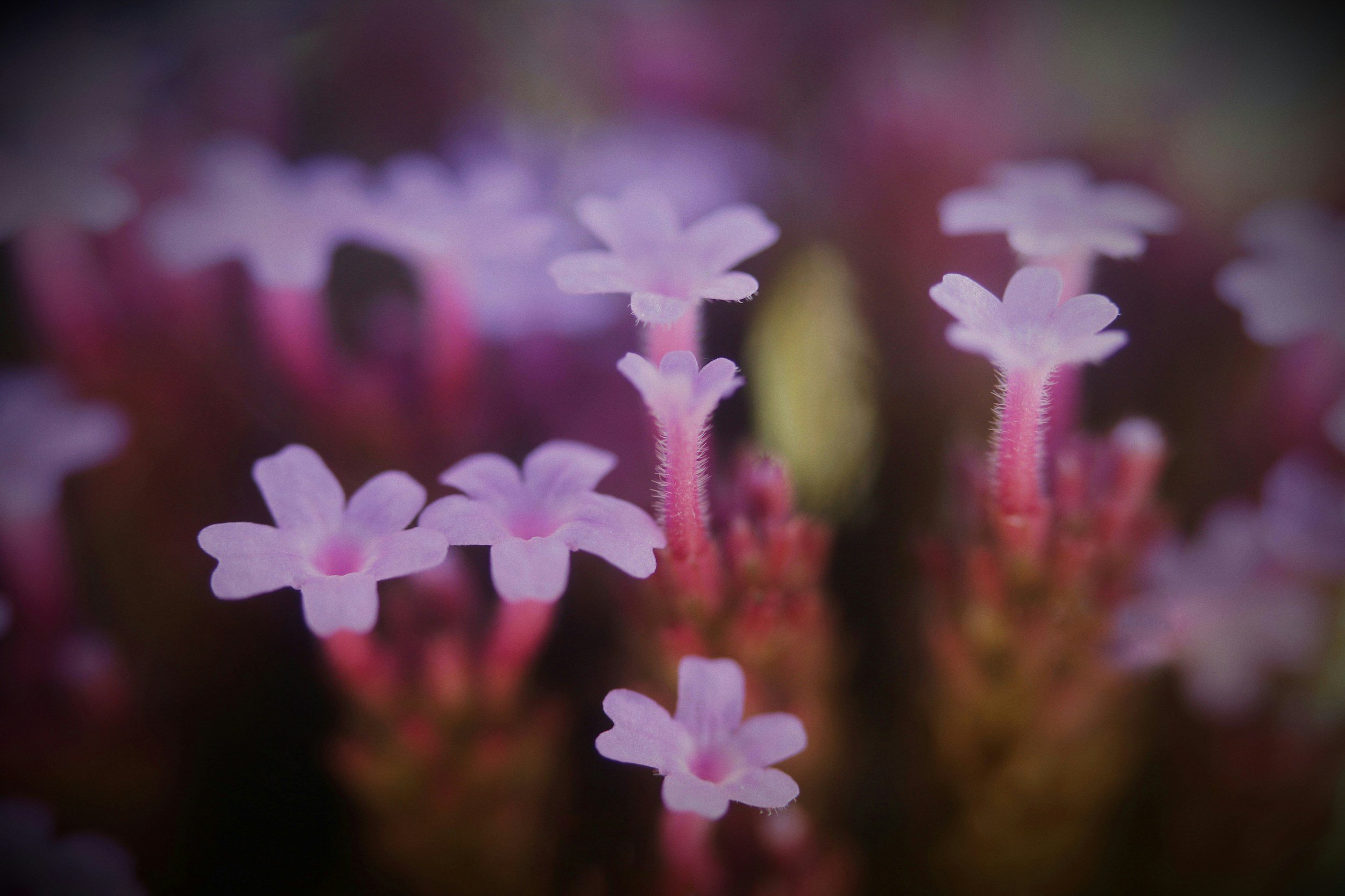
Vervain
Vervain
(Verbena officinalis)
Plant Family
Verbenaceae
Parts used
Herba
Typical forms of prescription
Infusions
Tinctures
Vervain (Verbena officinalis) - Clinical Snapshot
Primary Actions
Nervine (supports and calms the nervous system)
Anxiolytic (reduces anxiety)
Astringent
Diaphoretic (promotes sweating)
Antispasmodic (relieves muscle spasms)
Antitussive (relieves coughing)
Hypotensive (lowers blood pressure)
Hepatic (supports liver function)
Bitter (stimulates digestion)
Primary Indications
Used to support conditions such as:
Nervous tension, anxiety, and restlessness
Poor memory and reduced concentration
Dry, irritating coughs and asthma
Sore throats, sinus congestion, and nasal irritation
Hypertension (high blood pressure)
Menstrual cramps and premenstrual syndrome (PMS)
Urinary tract irritation and related disorders
Jaundice and sluggish liver function
⚠️Cautions / Safety⚠️
No known contraindications.
In large doses, some individuals may experience nausea, palpitations, or headaches.
Verbena officinalis
Phytochemistry and Pharmacology
-
Includes: Verbenalin, hastatoside
Action: Nervine, anti-inflammatory, sedative
Use: These iridoids are key to vervain’s soothing effects on the nervous system. They help ease tension, promote restful sleep, and offer gentle anti-inflammatory support. Verbenalin, in particular, contributes to vervain’s use in stress-related headaches, overwhelm, and nervous debility.
-
Includes: Citral, limonene (in trace amounts)
Action: Mildly carminative, relaxing
Use: While vervain is not a highly aromatic herb, small amounts of volatile oil contribute to its digestive soothing and mood-lifting effects, especially when used as a tea or tincture.
-
Includes: Oleanolic acid, ursolic acid
Action: Anti-inflammatory, hepatoprotective, antimicrobial
Use: These compounds support vervain’s traditional use for liver and gallbladder sluggishness, menstrual regulation, and low-grade infections, especially where there is a tension-inflammation pattern.
-
Includes: Luteolin, apigenin
Action: Antioxidant, anti-inflammatory, neuroprotective
Use: These flavonoids enhance vervain’s use in nervous exhaustion, migraines, and emotional trauma. They may also assist in modulating immune response and reducing chronic inflammation.
-
Action: Astringent, toning
Use: Tannins add to vervain’s role in digestive astringency, helping with mild diarrhoea, post-illness convalescence, or excessive mucous discharge.
Traditional Use
The name vervain is thought to come from the Celtic word ferfaen, meaning "to drive away stone", a reference to its traditional use in treating bladder stones. It has a long history in European folk medicine, where it was considered a sacred and magical herb, used in rituals, protection charms, and healing. Applied topically as a poultice, vervain was also a go-to remedy for relieving headaches and general nervous complaints. Herbalists across centuries have valued it as a plant of subtle but profound influence on both the body and the spirit.
Clinical Discussion
Today, vervain is recognised for its gentle yet effective support in cases of mild anxiety, nervous tension, and poor concentration. Its nervine and antispasmodic actions make it a helpful ally for easing menstrual cramps and premenstrual symptoms. It is also used to calm dry, spasmodic coughs and to support digestive and liver function. Additionally, vervain’s traditional connection with the urinary system persists, with continued use in soothing urinary tract discomfort. Though often overlooked, this understated herb offers broad and balanced support for stress-related complaints that span emotional and physical symptoms.
Cultivation/harvesting
Vervain (Verbena officinalis) is forgiving and rewards even casual attention. Start seeds indoors in early spring (6–8 weeks before the last frost). Seedlings germinate best with light; press them onto a fine, free-draining compost surface rather than burying them. Transplant to a sunny or lightly dappled spot, spacing plants 25–30 cm apart. Vervain tolerates poor, alkaline, or stony soils, but it flowers generously in moderately fertile ground with a pH around 6.5–7.5. Keep seedlings moist; mature plants are drought-resistant and only need supplemental watering in prolonged dry spells. Pinch out early shoot tips to encourage bushier growth and remove spent flower heads through summer to extend blooming. Vervain is generally pest-free, though aphids occasionally visit; blast them off with a jet of water or introduce ladybirds.
Harvest the aerial parts just as the top third of the flower spikes open (usually June–August in the UK). Cut the upper stems on a dry mid-morning after dew has lifted; this timing concentrates the volatile oils and bitter principles. Tie small bundles and dry them upside-down in a warm, shaded, well-ventilated area until the stems snap cleanly (7–10 days). Store the dried material whole in airtight jars away from light; crumble only when you’re ready to blend teas or tinctures to preserve potency. If you need roots for traditional preparations, lift two-year-old plants in late autumn, wash carefully, slice, and dry at ≤ 40 °C. Leave at least one mature plant to self-seed yearly to maintain a sustainable patch. Vervain is a prolific self-seeder and will naturalise politely among other herbs without becoming invasive.
Key Botanical Features of Vervain (Verbena officinalis)
Growth
Verbena officinalis is a slender, upright herbaceous perennial native to Europe, North Africa, and Asia.
It typically reaches 30–80 cm (12–31 inches) in height, though it can grow taller in rich soil.
Stems are square, slightly grooved, and branching, often with a reddish tint, typical of the Verbenaceae family.
Roots
It has a fibrous root system that anchors the plant well in dry or poor soils.
Roots are fine and wiry, sometimes forming a small crown at the base.
Leaves
Arrangement: Opposite (paired at each stem node).
Shape: Lower leaves are deeply lobed or pinnatifid, while upper leaves are more lanceolate and less divided.
Size: Lower leaves can reach 5–10 cm long; upper leaves are smaller and narrower.
Colour: Medium green, sometimes slightly rough in texture.
Surface: Slightly hairy or rough with visible veins.
Flowers
Type: Small, tubular, and five-lobed.
Inflorescence: Arranged in long, narrow spikes at the tops of stems and upper branches.
Colour: Pale lilac to soft violet, occasionally pinkish-white.
Size: Very small, each flower is about 3–5 mm across.
Structure: The corolla is fused into a slender tube with a spreading, lobed mouth, and the calyx is ribbed and persistent.
Flowering time: Typically from June to September in temperate climates.
Fruit & Seeds
Type: Schizocarp that splits into four small nutlets.
Shape: Narrow, ridged nutlets with a smooth surface.
Dispersal: Mainly by gravity and water, though occasionally aided by animals brushing past.
Adaptations
Well-adapted to sunny, dry environments and poor, alkaline soils.
Often found along roadsides, field edges, and dry meadows.
Tolerates drought and compacted ground but struggles in waterlogged soils.
Self-seeding and naturalises easily without becoming invasive.
Flowers attract bees, butterflies, and other pollinators despite their small size.
Sustainability/Conservation
Not currently at risk and widely naturalised across temperate regions.
Easy to cultivate from seed, making it a sustainable choice for gardens and herbal production.
Encouraging wild patches in herb gardens can support local biodiversity.






Sources
Bartram, T. (1998). Bartram’s Encyclopedia of Herbal Medicine. Constable.
Fisher, C. (2009). Materia Medica of Western Herbs, (2018 edition). Finchley Road, London. Aeon Books.
Hedley, C & Shaw, N. (2020). A herbal book of making and taking. Finchley Road, London. Aeon Books.
Hoffmann, D. (2003). Medical Herbalism: The Science and Practice of Herbal Medicine. Healing Arts Press.
McIntyre, A. (2019). The complete herbal tutor, revised and expanded edition. Finchley Road, London. Aeon Books.
Plants of the World Online | Kew Science. (n.d.). Plants of the World Online. https://powo.science.kew.org/
Disclaimer: This page is for educational purposes only. Consult a qualified medical herbalist before using herbs, especially during pregnancy, when trying to conceive, while breastfeeding, for medical conditions, or with children.
Read the full disclaimer → Medical Disclaimer.




